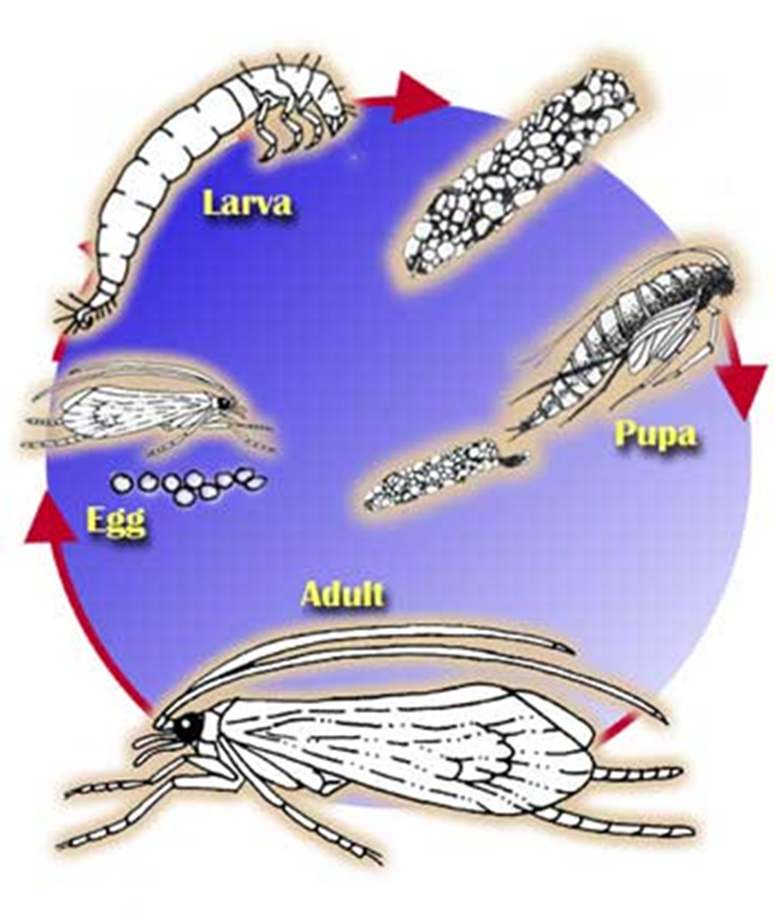-

Caddisflies
Eggs, 5 instars, Pupa, Adult
Oviposition usually in water
have developmental cohorts
univoltine and bivoltine
once they hatch either bi or multivoltine
Three genera of larvae of caddisfly that are unknown
-
Suborders (2) of North America Trichopteran
Annulipalpia (7 fam)
Larvae pupate inside of their silk retreats in their silk cocoon
that has a small opening at each end.
-
Basal Integripalpia (4 fam)
Larvae pupate in a completely closed cocoon of parchment. cases can be purse-like or doom-like
-
Integripalpia (16 fam)
larvae pupate inside their last larval case after it has been attached to the substrate and seal both ends. openings at each end to allow circulation of water. Prosternal horn. carry their cases around.
-
Trichoptera
From cool to warm temperature the number of families drop down.
-
Annulipalpia: Dipseudopsidae
The only genus, Phylocentropus.
Larvae differ from those of Polycentropodidae
broad, flattened, setose tarsi (Fig. 16.72) and short, broad mandibles with mesal brushes.
These are adaptations for their feeding on detritus, which they collect with a net placed within tubes that they construct in sand and silt along margins of sandy streams and lakes. The type of capture nets used and their feeding habits vary among species[715]. All North American species occur east of the Great Plains. The life cycle is probably one year, with cohorts emerging from May to August
-
Hydropsychidae
Net spinners

